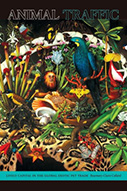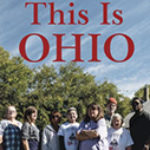Animal Traffic: Lively Capital In The Global Exotic Pet Trade

Author: Rosemary-Claire Collard
Publisher: Durham, NC: London: Duke University Press, 2020. 200p.
Reviewer: Ragnhild Sollund | May 2021
Rosemary-Claire Collard’s book about the global exotic pet trade was a pleasure to read. From a Marxist theoretical approach, the author takes us through the different stages of the wildlife trade from when the individual animals are captured, throughout the auctions where they are sold, to rehabilitation and finally to suggestions about how to prevent this tremendous harm. Through extensive fieldwork including visits to source countries of the wildlife trade, such as Guatemala and Mexico, visits to wildlife auctions around the United States, and through work in a rehabilitation centre for trafficked wildlife in Northern Guatemala, Collard shows who the animal victims are, what they suffer, and the problems in repairing such crimes.
Wildlife trafficking is a multi-million-dollar global industry, and the author wants to explore how animals are transformed from free independent autonomous creatures with a life of their own, into being just lively capital. What happens in the process when a free born animal is converted into someone’s dependent property, and cut off from all previous connections? Collard convincingly takes us through these different stages, and through her personal notes from the fieldwork the reader feels she herself is part of the extensive journey this book describes — geographically, empirically and intellectually. Drawing a parallel to Ahmed (2000), Collard argues that the animal through the processes of commodification is turned into a fetish cut off from the complex story of its own being. The animal is denied a life of its own and turned into an economic resource for the trapper and the sellers.
In order to become objects for trade, the animals are made “thinglike” –alienated, individuated and controlled. Their use value is dependent on their encounter ability, their controllability and their individuality, a point repeated throughout the book. Yet, despite this objectification, and as Collard also shows, it is important for the buyer that the animal is likeable and enjoyable, in order to secure a use value for the buyer who, for example, wants to keep a spider monkey dressed up in diapers and baby clothes on a leash. For the animals to be pleasant for the owners, they go through various processes, such as wing clipping for parrots and teeth filing in the case of primates. Parrots and other animals suffering from post-traumatic stress disorders are less likeable, and are sold for less money at the auctions, or they will go from hand to hand, which is often the case with parrots.
While much of the wildlife trade literature accepts the idea that animals primordially are “resources” that can be traded in accordance with the CITES (Convention on International Trade in Endangered Species of Wild Fauna and Flora), in this book empathy for the direct animal victims is dominant.
The CITES (with currently 183 parties, not 178 as is said in the book) seeks not to prevent trade; rather it is a trade regulation seeking to prolong wildlife trade (Goyes and Sollund 2016). This topic could have been more thoroughly discussed in the book, because whether legal or illegal, wildlife trade is not just an issue of poor but biodiversity rich countries losing their resources, it is a matter of tremendous harm and suffering as well as animal deaths and species extinction. This trade is, however, generally globally endorsed and legitimized through the CITES.
The ways in which CITES legitimates wildlife trade makes it hard to curb demand, however curbing is discussed briefly as a strategy in the final chapter. This is likely the most important way of preventing the harms and crimes of wildlife trade, and it would have been nice to have seen here further debate about what means can be used to achieve this. The global trade in “exotic pets” is steadily increasing due to the increased demand produced, for example, through Facebook and other social media showing videos of “cute” animals.
Collard exemplifies the enormous hard work and moral implications of rehabilitating animal trafficking victims. Baby monkeys do, for example, first receive a lot of nursing and care, but as soon as possible during rehabilitation they are taught that humans are dangerous, in order to make them fit for repatriation to their natural habitats. Very often, however, rehabilitation fails, and the animals remain in cages and enclosures for the rest of their lives. (For a parallel to Colombia, see Sollund 2019). The animals can never be returned to their natural habitats because of what they have suffered, and the ways in which they have been handicapped, both mentally and physically. Interestingly, Collard shows also how wildlife rehabilitation centres have their roots in colonialism, wherein wealthy Westerners travel to Southern countries where they actually pay to work in order to rectify the harms done to the animals.
Perhaps it was because the book was intentionally kept short, much of the literature that addresses wildlife trafficking from a harm perspective has been left out (See e.g., van Uhm 2016: Wyatt 2013 and Sollund 2019). In this literature, a point is often made about the intrinsic value of animals, and about their capacity to suffer as sentient beings. Collard, however, seems to address this through referring to animals having their “own use value”. I am reluctant to accept this concept, because it seems to narrow down, rather than expand the idea and empirical reality of what an animal is, whether nonhuman or human, rather than simply being an economic entity.
That said, this book is a very good introduction to the global trade in endangered species, and the economization of what is included in the book is admirable. The author must have had very rich data to build the study from, and the fieldwork she describes is also admirable. To be present in the auctions where animals are sold; to witness the cages within which animals are trafficked across borders; and, to see first-hand and get to know (although personal contact was not allowed) how the trafficked animals are deprived of the life they should have had. All this must have been very emotionally disturbing. Despite this, the author never becomes sentimental, but instead maintains a stern analytical perspective.
References:
Ahmed, S. (2000). Strange encounters: Embodied others in post-coloniality. London: Routledge
Sollund, R. A. (2019). The crimes of wildlife trafficking: Issues of justice, legality and morality. London: Routledge.
Van Uhm, D. P. (2016). The illegal wildlife trade: Inside the world of poachers, smugglers and traders (Vol. 15). Springer.
Wyatt, T. (2013). Wildlife trafficking: A deconstruction of the crime, the victims, and the offenders. Springer.


